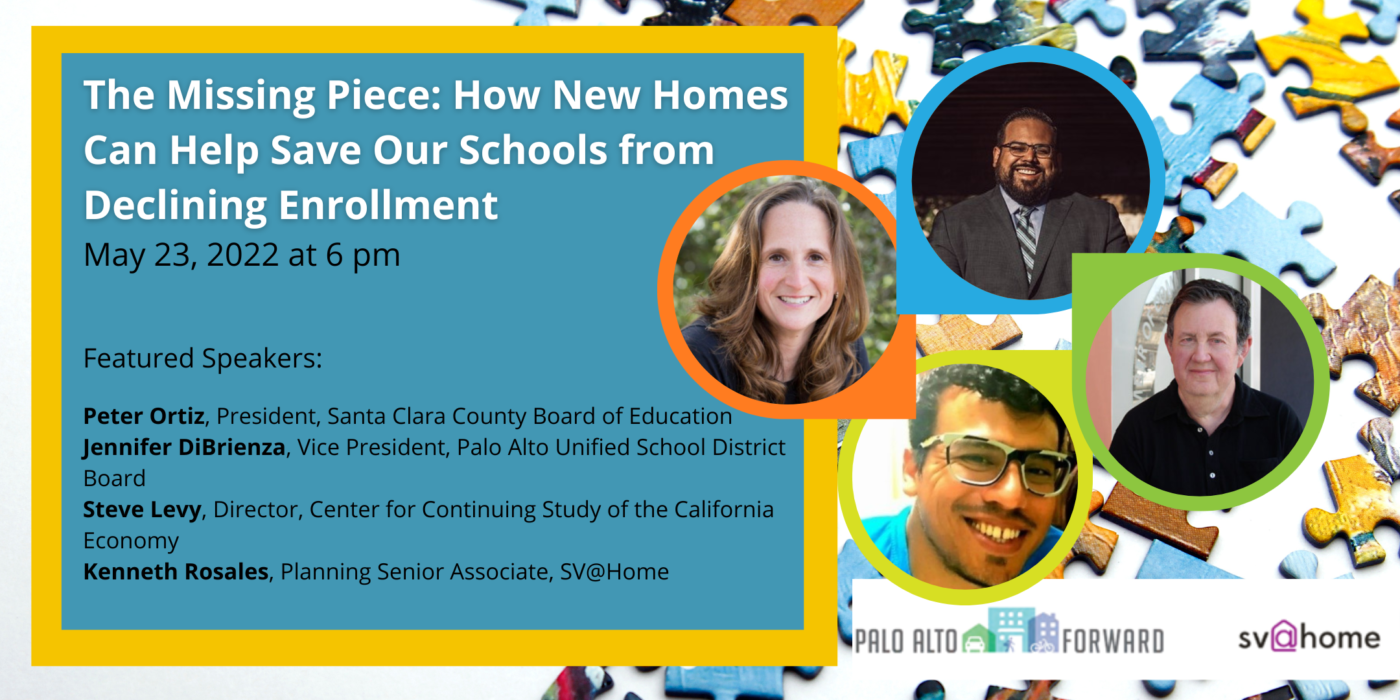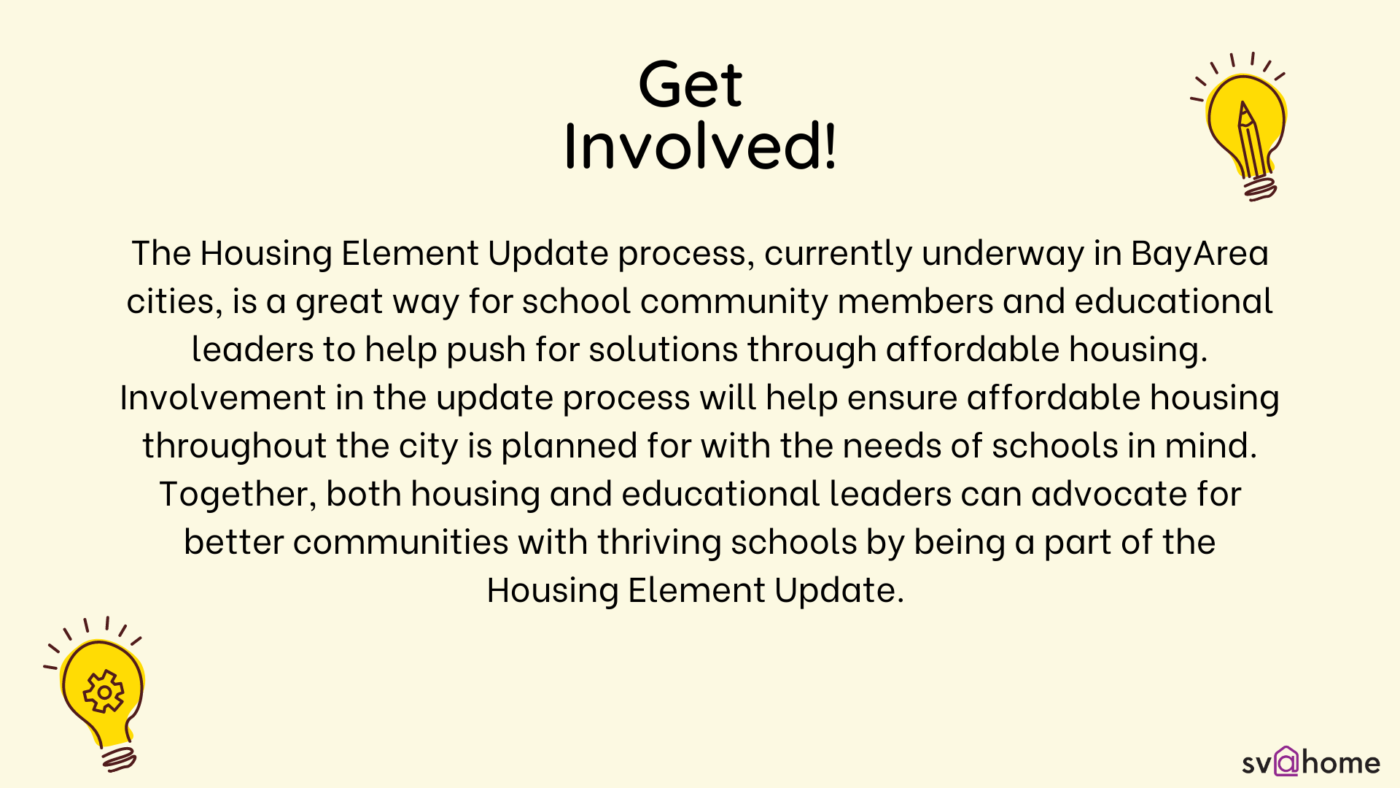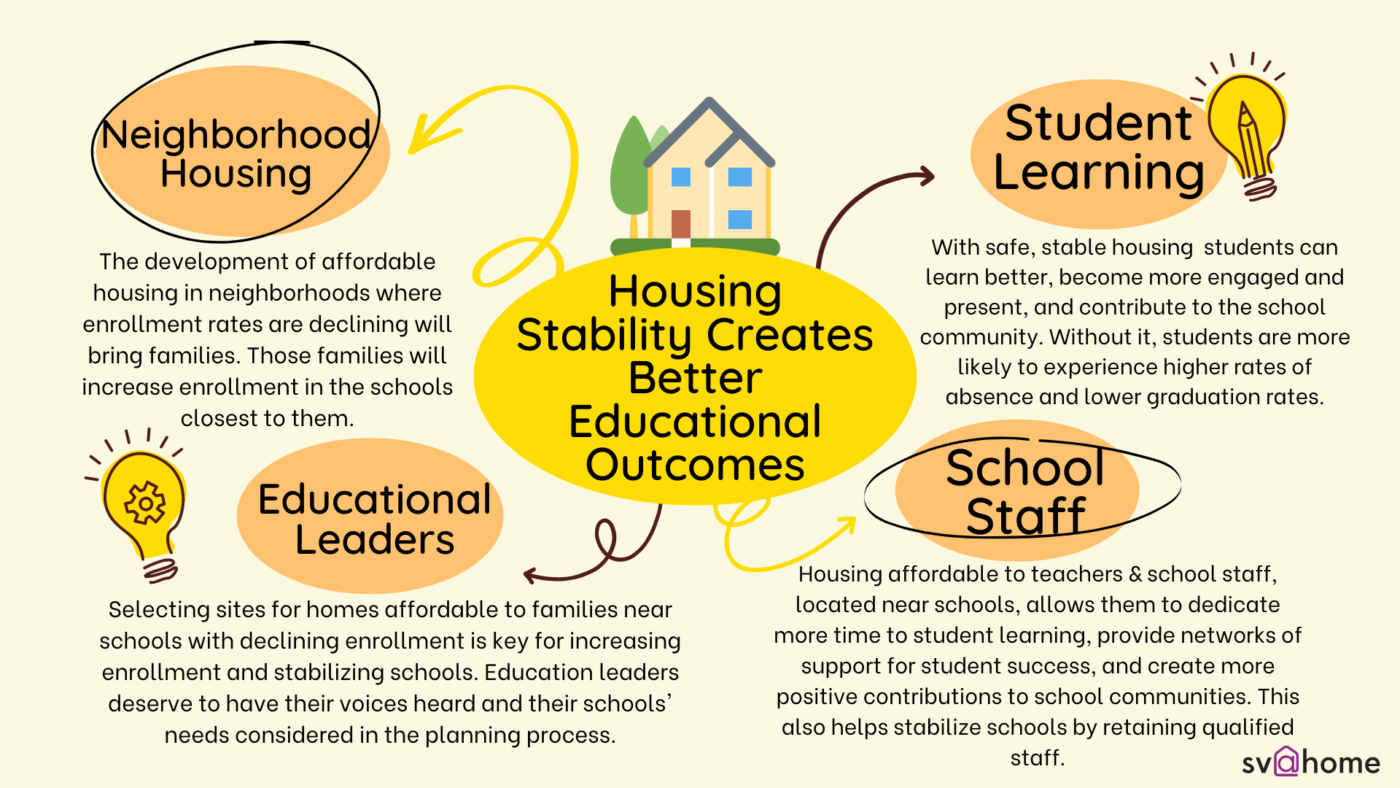Affordable Housing Month Rewind
{Editor’s Note: Affordable Housing Month 2022 ended just two months ago, but many of the events were recorded and still hold valuable, actionable information for housers. SV@Home asked our summer interns to watch some of these recordings and extract five essential points from each. We felt it was a great way to pass our housing knowledge to the next generation and serve as a quick reference guide for our members who want to go back and re-live some of the most critical moments of an action-packed month of housing events. What follows is a blog post from Aurion Wiley-Green and her observations from our school enrollment event. Enjoy!}

Schools throughout California have projected an overall decline in K-12 enrollment rates due to lower birth rates. However, recent statistics reveal the decrease in enrollment in Santa Clara County is happening now and has a lot to do with the lack of affordable housing. During Affordable Housing Month in 2022, SV@Home’s Alison Cingolani hosted an event called “The Missing Piece: How New Homes Can Help Save Our Schools from Declining Enrollment,” The webinar features Jennifer DiBrienza, Board Member of the Palo Alto Unified School District; Steve Levy, Director of the Center for Continuing Study of the California Economy; Peter Ortiz, President of the Santa Clara County Board of Education, and Kenneth Rosales, Planning Senior Associate at SV@Home. The discussion shed light on ways planning for housing affordable to families can help offset the projected loss of more than 41,000 students county-wide by 2030. Community members, schools officials, and local policymakers can help by taking action in the following five areas:
Understand the connection between lack of adequate housing and school success. As the cost of living increases, young families get pushed out of the area, and school enrollment decreases. As enrollment decreases, schools receive less state funding, and schools serving lower-income families are hit the hardest with a loss of resources vital to better educational outcomes. When low-income families get priced out in more affluent areas, they leave the area and affect the school district’s ability to meet statewide diversity initiatives. Once the correlation between school health and housing affordable to families is broadly understood, building collective support for more affordable housing will be easier.
Neighborhood housing will increase school enrollment. The development of housing affordable to families in communities where enrollment rates are declining will bring children back to our neighborhoods. Those families will increase enrollment in the schools closest to them. The enrollment rates will increase state funding tied to enrollment.
Education leaders need to be in the decision-making room. So much of what happens outside of schools affects what happens in schools. Selecting affordable housing sites near schools experiencing declines will be integral to supporting the financial health of school communities. However, if education leaders are not present in the decision-making process, city planners may not be aware of the needs of schools, and may not consider them as they plan sites for future homes.
Housing security will help student learning. When stable housing is available for students, they can learn better, become more engaged and present, and contribute to the school community. Also, they can engage in extracurricular activities outside of school that add to student success. Without stable housing, students are more likely to experience higher rates of absence and lower graduation rates.
Educators and school staff are an integral part of a successful school. When school staff can afford housing in the communities they serve, they can dedicate more of their time to student learning, create networks of support for student success, and make an even stronger contribution to the overall school community. In addition, schools remain equipped with qualified educators and staff to increase the quality of the school.
Given the recent breakthrough in understanding the correlation between affordable housing and successful schools, planning for housing affordable to families across all income levels is a necessity. Many education leaders recognize this correlation and need to be a part of the solution by engaging with city efforts to plan for local development. Investments in housing affordable to families, and located near schools, are an investment in quality schools and better educational outcomes for students. In turn, if stable housing is not created, there will be a continuous decline in school enrollment and quality education.
The Housing Element Update process, currently underway in BayArea cities, is a great way for school community members and educational leaders to help push for solutions through affordable housing. Involvement in the update process will help ensure affordable housing throughout the city is planned for with the needs of schools in mind. Together, both housing and educational leaders can advocate for better communities with thriving schools by being a part of the Housing Element Update. To learn more, visit SV@Home’s Housing Element Toolkit by clicking on this link.


